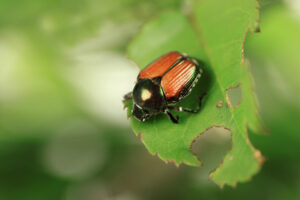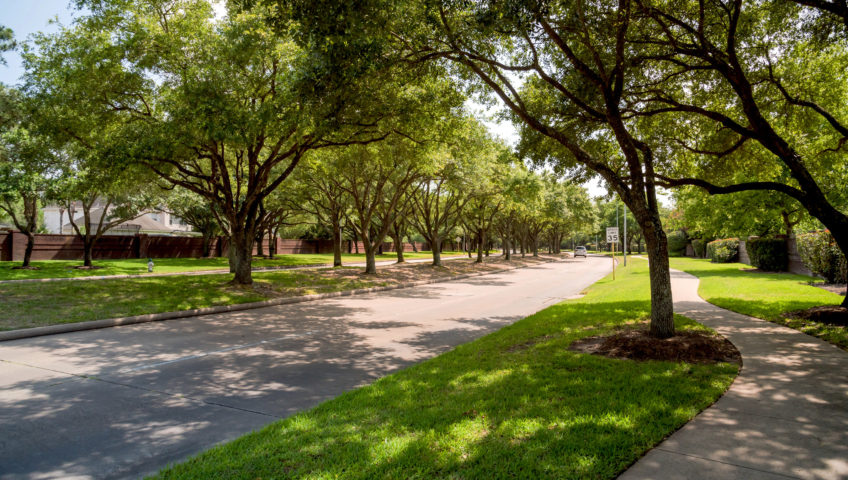Japanese beetles are an invasive species that first infested the Northeast and have since spread westward throughout the United States. Minnesota is just one of the many states that struggles with infestations of Japanese beetles every year. These green-and-copper-colored insects ravage the leaves of many trees and shrubs, leaving them skeletonized.
Japanese beetles first begin appearing in late June and early July. If they start to swarm around your property in Minnesota, they can cause devastating damage. Keep reading to learn how you can keep your trees and shrubs safe from Japanese beetles.
Top 5 Tips for Stopping Japanese Beetles Infestations in MN

- Use Insecticide – The most direct approach to Japanese beetles is to kill them outright with applications of insecticide. Carbaryl-based insecticide sprays will kill Japanese beetles on contact without harming your plants. However, while this is the most effective response to an active Japanese beetle infestation, you should attempt to dissuade these invasive pests from swarming on your property to begin with.
- Use Natural Repellents – If you’re concerned about using insecticides, there are natural deterrents which can be applied to your plants to keep Japanese beetles at bay. Both cedar and garlic are natural Japanese beetle repellents which may prove effective in keeping them from swarming on your plants. Spray a solution of water mixed with either cedar oil or garlic over your vulnerable trees and shrubs once per week during the summer to deter Japanese beetles. Be sure to spray again any time it rains so that the deterrent remains effective.
- Target the Grubs – Japanese beetles begin life in the form of grubs that hatch and develop in the soil. Treating the soil around your home in Minnesota with neem oil can curb your Japanese beetle infestation. Neem oil will discourage beetle grubs from feeding and if they do consume it, the eggs they lay will be rendered infertile. Apply neem oil to the soil around your trees and other plants early in spring when the ground first thaws to stop Japanese beetles before they have a chance to mature and reproduce.
- Be Careful With Traps – While most garden centers sell Japanese beetle traps, using them in the wrong way can actually make your beetle infestation worse instead of better. The traps work by luring beetles in with pheromones. The problem is that these traps will invariably attract more Japanese beetles than they kill, and those beetles which avoid the traps will then wreak havoc on your trees and shrubs. While strategically placing Japanese beetle traps on a large property can be effective, you should avoid using them in a small yard.
- Plant Beetle-Resistant Trees – While Japanese beetles are attracted to many species of trees including birches, elms and crabapples, there are also certain plants which they tend to avoid. Japanese beetle resistant trees and shrubs include boxwoods, dogwoods, lilacs and oaks. Adding some of these plants to your property in Minnesota can reduce the risk of Japanese beetles swarming around your home and mauling your trees.
Professional Japanese Beetle Treatments in Minnesota
Japanese beetles can destroy the beauty of your gardens and weaken the health of your trees. If you’d like professional assistance to treat your property for Japanese beetles, our tree care specialists would be happy to help. Give Pro-Tree Outdoor Services a call today for any Japanese beetle treatment services you need in the greater Twin Cities area!


Write a Comment